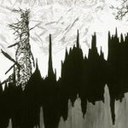0017 Landscape Painting
Rewriting Painting in the Postmedium Condition
Identifiers (Article)
Identifiers (Files)
Abstract
Is landscape painting still relevant today? To answer this question the article examines the work of the contemporary artist Yehudit Sasportas. Sasporas offers a unique kind of written-drawn landscape painting that moves between the manual and the mechanical. The theoretical perspectives from which it is approached are taken, among others, from Plato, Heidegger and Derrida on the issue of writing. Sasportas painting, which may be characterized as "painting under erasure" or "Landscape Painting", serves as a key to understanding the status of painting as a relevant medium, not because it defines medium according to the modernist Greenbergian formula, but because it enables an understanding of painting as a field that exists in a variety of media. Painting as a field, in Sasportas's art, works and lives within various techniques and materials, even when it includes within itself a melancholic mark indicating doubt about its own relevance.
Statistics


License

This work is licensed under a Creative Commons Attribution-NonCommercial-NoDerivatives 4.0 International License.



